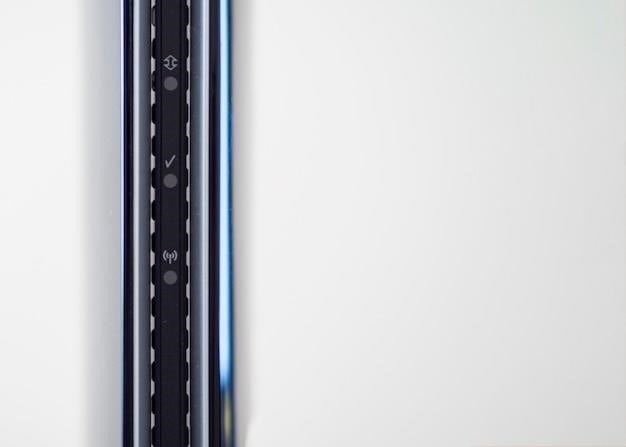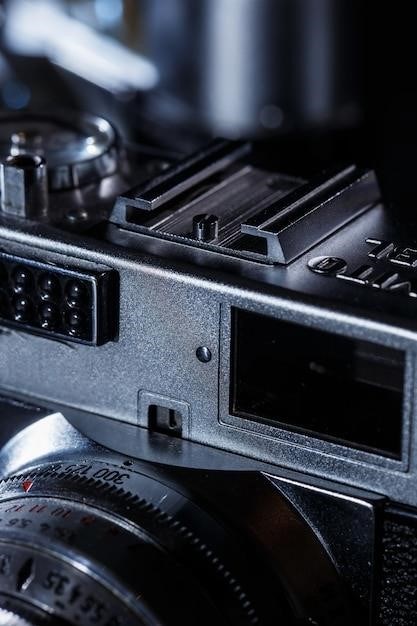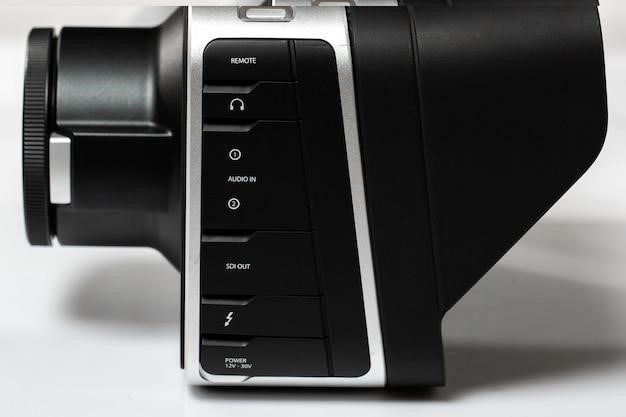Minolta SRT-101⁚ A Comprehensive Guide
This guide explores the Minolta SRT-101‚ a renowned 35mm SLR camera. We’ll cover locating manuals‚ understanding its features‚ including the CLC exposure meter system‚ and delve into maintenance‚ repair‚ and community resources for support and historical information. Discover essential resources for troubleshooting and restoring this classic camera.
Finding the Manual
Locating your Minolta SRT-101 manual might involve a multi-pronged approach. First‚ check the original camera box or any accompanying packaging; the manual might be tucked away inside. If not‚ consider exploring your home for storage areas where old documents or electronics accessories might be kept. Attics‚ basements‚ and drawers often become repositories for forgotten items. Don’t forget to check any camera bags or cases you might own‚ as manuals are sometimes stored with the camera equipment itself. A thorough search of your personal belongings could yield the manual without needing to consult external resources. Remember to check carefully in any areas where you might have previously stored camera-related materials.
Online Resources for Manuals
The internet offers a wealth of resources for finding your Minolta SRT-101 manual. Websites specializing in camera manuals‚ such as OrphanCameras.com‚ often host downloadable PDF versions of instruction manuals for various camera models. These sites are invaluable for those seeking hard-to-find documents. Additionally‚ conducting a targeted search on major search engines like Google‚ Bing‚ or DuckDuckGo‚ using specific keywords such as “Minolta SRT-101 manual PDF download‚” can lead you to various online repositories or individual websites offering the manual. Remember to always download files from reputable sources to minimize the risk of malware. Check user reviews and comments before downloading any files to verify the authenticity and quality of the manual. Explore online forums dedicated to photography and vintage cameras‚ as users often share links to helpful resources and manuals within their communities.
Downloadable Manuals⁚ PDF Versions
Numerous websites offer downloadable PDF versions of the Minolta SRT-101 manual. These digital copies provide convenient access to the information you need‚ anytime‚ anywhere. The advantage of a PDF is its searchability; you can quickly locate specific instructions or troubleshooting tips using the PDF reader’s search function. Many sites provide free downloads‚ while others might charge a small fee for access. Be cautious when downloading from less reputable sources‚ verifying the file’s integrity and the site’s security before downloading. Some websites offer both the owner’s manual and potentially a service manual in PDF format. Remember to check the file size and number of pages before downloading to ensure you’re getting the complete manual. Always save downloaded manuals to a safe and easily accessible location on your computer or cloud storage for future reference. Consider printing a copy for offline use if you prefer a physical manual.
Accessing Service Manuals
Finding a service manual for the Minolta SRT-101 can be more challenging than locating the user manual. These manuals contain in-depth technical information‚ schematics‚ and repair procedures typically intended for professional technicians or experienced camera repair enthusiasts. While some websites might offer them as paid downloads‚ others may only be available through specialized camera repair forums or communities. Exercise caution when using a service manual; improper repair attempts can cause irreparable damage to the camera. If you lack experience in camera repair‚ consulting a professional is strongly recommended. The service manual might include exploded diagrams showing the camera’s internal components‚ making disassembly and reassembly easier for experienced individuals. Remember‚ working on vintage cameras often requires specialized tools and a good understanding of electronics and mechanics. Always prioritize safety and avoid any potential hazards.
Repair Manuals and Their Availability
Securing a repair manual for your Minolta SRT-101 might prove to be a quest requiring patience and resourcefulness. Unlike readily available user manuals‚ repair manuals often reside in more obscure corners of the internet. These specialized guides provide detailed instructions for fixing mechanical and electronic issues within the camera. They are usually more technical than user manuals‚ often featuring diagrams‚ schematics‚ and part lists. Online marketplaces‚ auction sites‚ and specialized camera repair forums are potential sources. However‚ be aware that the quality and accuracy of these manuals can vary significantly. Some might be scans of original documents‚ while others might be user-created guides; Always scrutinize the source and reviews before purchasing or downloading a repair manual. Consider the complexity of the repair before attempting it yourself. If the repair requires specialized tools or expertise‚ it’s best to seek the assistance of a professional camera repair technician to ensure your camera’s longevity.
Understanding the Camera’s Features
Explore the Minolta SRT-101’s key features⁚ its through-the-lens (TTL) metering system‚ the innovative CLC circuit for accurate exposure in diverse lighting‚ and compatibility with a range of Minolta lenses and accessories.
The SRT-101’s Exposure Meter System
The Minolta SRT-101 boasts a sophisticated through-the-lens (TTL) metering system‚ a crucial feature for achieving well-exposed photographs. Unlike earlier cameras that relied on external light meters‚ the SRT-101’s TTL system measures the light passing through the lens‚ providing a far more accurate reading of the scene’s brightness. This accuracy is particularly important for consistent exposures across various shooting conditions. The system’s precision is further enhanced by the camera’s unique CLC (Contrast Light Compensation) circuit. This innovative circuit compensates for high-contrast scenes‚ where traditional metering systems might struggle to provide an accurate reading. The CLC circuit ensures that the meter reading accounts for the entire picture area‚ minimizing the effects of bright highlights or dark shadows on the overall exposure. This results in consistently well-exposed images‚ even under challenging lighting conditions. The SRT-101’s needle-type meter provides clear visual feedback‚ allowing for easy adjustment of shutter speed and aperture settings to achieve the desired exposure. The meter’s responsiveness and accuracy are critical to the camera’s reputation for reliable performance and consistent results. Mastering the interaction between the meter‚ aperture‚ and shutter speed is key to unlocking the full potential of the SRT-101’s metering system.
CLC Circuit and its Advantages
The Minolta SRT-101’s standout feature is its innovative Contrast Light Compensation (CLC) circuit. This system significantly improves metering accuracy‚ particularly in high-contrast scenes where traditional metering systems often struggle. Standard metering systems can be easily fooled by extreme brightness or darkness‚ leading to incorrectly exposed photographs. The CLC circuit addresses this by providing a more balanced reading‚ taking into account the entire scene’s light distribution. Instead of relying on a single average reading‚ the CLC system analyzes the light across the entire image area‚ effectively neutralizing the impact of overly bright highlights or deep shadows on the overall exposure. This results in more accurate exposures‚ ensuring that details are captured in both the highlights and shadows‚ even in challenging lighting conditions. The advantage of the CLC circuit is a significant improvement in the consistency of exposures. This is particularly beneficial for photographers working in diverse lighting environments‚ ensuring images are consistently well-exposed‚ regardless of the scene’s contrast. The CLC circuit’s ability to compensate for contrast makes the SRT-101 a reliable and versatile camera for a range of photographic applications.
Lenses and Accessories Compatibility
The Minolta SRT-101 utilizes the Minolta SR-mount‚ a bayonet mount system. This system offers excellent compatibility with a wide range of Minolta lenses produced during that era. Many photographers appreciate the extensive selection of lenses available‚ catering to various focal lengths and photographic styles. From wide-angle lenses ideal for expansive landscapes to telephoto lenses perfect for capturing distant subjects‚ the options are diverse. Macro lenses are also available‚ allowing for close-up photography of smaller details. Beyond lenses‚ a variety of accessories enhanced the SRT-101’s functionality. These included specialized viewfinders‚ external flash units for low-light photography‚ and various lens filters to modify light and enhance image quality. The availability of these accessories provided photographers with considerable creative control and allowed for adaptability to different shooting situations. Finding these accessories today might require some searching‚ but online marketplaces and camera collectors often have them available. Remember to verify compatibility before purchasing any accessories to ensure a seamless fit with your SRT-101.

Maintenance and Repair
This section details troubleshooting common Minolta SRT-101 issues‚ provides guidance on disassembly and reassembly‚ and suggests professional repair services when needed for this classic camera.
Troubleshooting Common Issues
The Minolta SRT-101‚ while robust‚ can experience common problems. Light leaks are a frequent issue‚ often stemming from worn seals around the back door or lens mount. Carefully inspect these areas for any gaps or damage. A faulty light meter is another potential problem; ensure the meter needle is responsive and accurate. If not‚ check the battery and clean the meter cell. Shutter problems‚ such as slow speeds or sticking‚ can result from age and wear. Lubrication might resolve minor sticking‚ but more significant issues require professional attention. Film advance issues‚ including jamming or stiffness‚ often indicate a problem within the film advance mechanism. Careful cleaning and lubrication might suffice‚ however‚ severe problems necessitate professional repair. Lastly‚ focus issues can stem from dirty or damaged focusing elements. Thorough cleaning using appropriate techniques is crucial here. Remember‚ attempting repairs without proper knowledge can worsen the camera’s condition. Consult repair manuals and consider professional help when needed.
Disassembly and Reassembly Guides
Finding detailed disassembly and reassembly guides for the Minolta SRT-101 can be challenging‚ but not impossible. While official Minolta service manuals are the ideal resource‚ they can be rare and expensive. Online forums dedicated to classic camera repair often provide valuable information‚ including user-created guides and discussions on specific repair procedures. These forums offer a wealth of knowledge from experienced technicians and hobbyists who have successfully disassembled and reassembled the SRT-101. However‚ proceed with extreme caution. Disassembly requires meticulous attention to detail‚ and improper handling can cause irreversible damage. Always take photos at each step to aid reassembly. Clearly label all screws and parts for easy organization. If you lack experience in camera repair‚ it’s strongly recommended to seek professional assistance. Improper disassembly can lead to irreparable damage to this classic camera‚ rendering it unusable.
Professional Repair Services
If you’re uncomfortable attempting repairs yourself or lack the necessary tools and expertise‚ seeking professional camera repair services is highly recommended. Many skilled technicians specialize in vintage cameras like the Minolta SRT-101. These professionals possess the knowledge‚ experience‚ and specialized tools to diagnose and address complex issues. Before entrusting your camera‚ research reputable repair shops with a proven track record of successfully restoring classic cameras. Check online reviews and testimonials to gauge their expertise and customer satisfaction levels. Obtain a detailed estimate outlining the repair costs and timeframe before proceeding. Remember to clearly communicate the specific problems you’re experiencing with your SRT-101. This ensures the technician can accurately assess the situation and provide an appropriate solution. Professional repair services provide peace of mind‚ ensuring the longevity and functionality of your cherished camera.

Additional Resources
Explore online forums dedicated to vintage cameras for troubleshooting tips and user experiences with the Minolta SRT-101. Discover historical information and background details about this iconic camera model.
Community Forums and Support
Engaging with online communities dedicated to classic cameras can provide invaluable support for your Minolta SRT-101. These forums often serve as repositories of collective knowledge‚ where experienced users and enthusiasts share their expertise‚ troubleshooting tips‚ and maintenance advice. You’ll find discussions on common issues‚ repair techniques‚ and even sources for hard-to-find parts. The collaborative nature of these communities fosters a sense of shared passion‚ allowing you to connect with like-minded individuals who understand the unique challenges and rewards of owning and maintaining vintage cameras like the Minolta SRT-101. Many forums offer dedicated sections for specific camera models‚ making it easy to find information directly relevant to your needs. Don’t hesitate to ask questions; the community is generally very welcoming and helpful to newcomers. Actively participating in these forums can expand your knowledge‚ improve your skills‚ and help you keep your Minolta SRT-101 functioning for years to come. Beyond problem-solving‚ these online communities offer opportunities to share your own experiences‚ photos‚ and insights‚ contributing to the collective knowledge base and fostering a vibrant network of Minolta SRT-101 users.
Historical Information and Background
The Minolta SRT-101 holds a significant place in the history of 35mm SLR cameras. Introduced in the late 1960s or early 1970s (precise date requires further research)‚ it represented a significant step forward in accessible‚ high-quality photography. Its through-the-lens (TTL) metering system‚ a relatively new technology at the time‚ made accurate exposure significantly easier for photographers of all skill levels. The innovative CLC (Contrast Light Compensation) circuit further enhanced metering accuracy‚ particularly in high-contrast lighting conditions‚ setting it apart from many of its contemporaries. The SRT-101’s robust construction and reliable mechanics ensured its longevity‚ contributing to its enduring popularity among both professional and amateur photographers. Its design‚ a blend of functionality and classic aesthetics‚ remains appealing to collectors and enthusiasts today. Understanding the historical context of the SRT-101 enhances appreciation for its design choices and technological advancements. Its place in photographic history showcases Minolta’s contribution to the evolution of 35mm SLR technology and its lasting impact on the world of photography. Researching its production timeline and market reception further enriches the user’s understanding and connection to this iconic camera.





